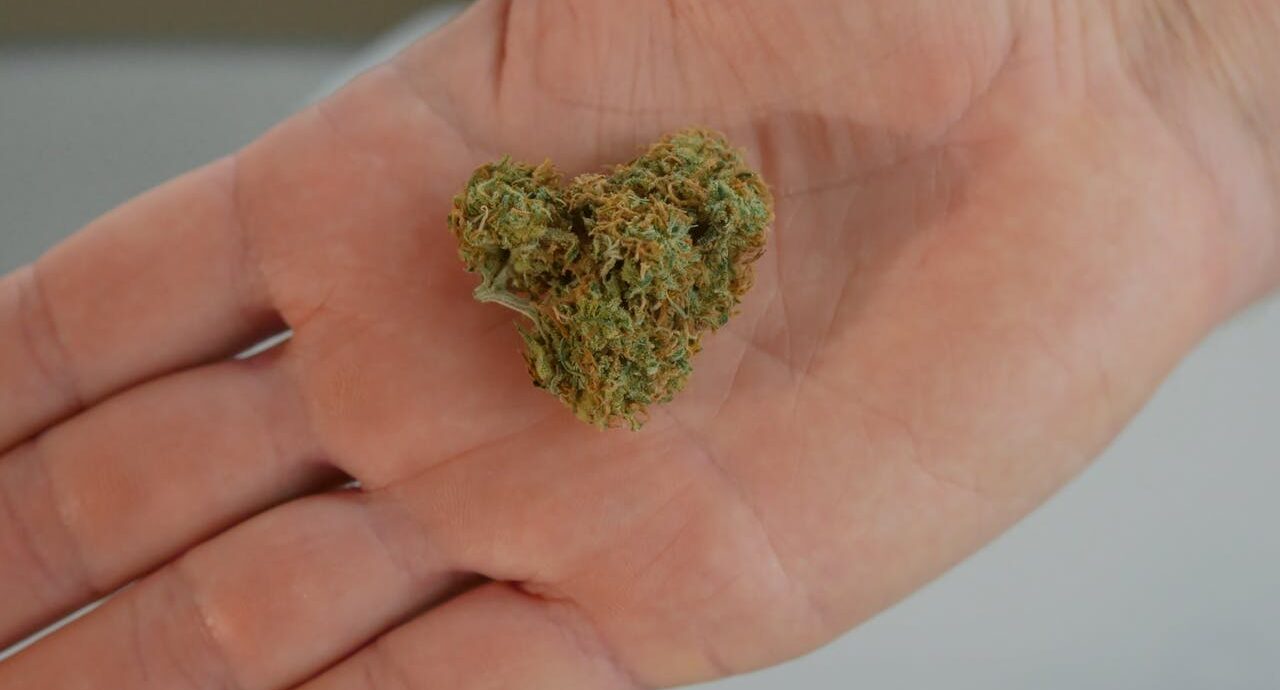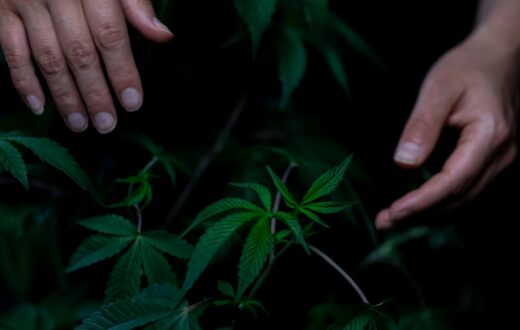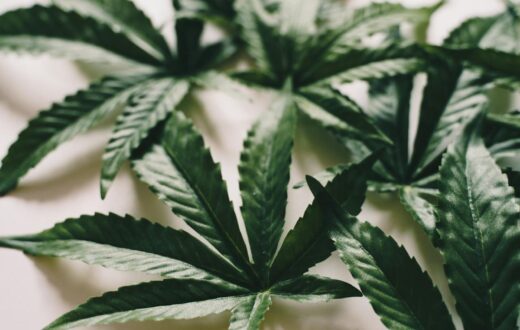Introduction to Blueberry Kush
The Blueberry Kush regular weed strain has garnered significant attention among cannabis enthusiasts for its unique characteristics and remarkable lineage. This strain is a delightful blend, primarily comprising the hybrid genetics of Blueberry and OG Kush. Its lineage results in a well-rounded experience that appeals to both novice and seasoned growers. The combination of these parent strains not only imparts powerful effects but also a rich flavor profile that has taken the cannabis market by storm.
One of the most compelling aspects of the Blueberry Kush strain is its aromatic profile. Upon opening a jar of these vibrant buds, one is immediately greeted by a sweet, berry-like scent, reminiscent of freshly picked blueberries. This fragrant note is accompanied by earthy undertones common in classic Kush strains, which create an inviting aromatic experience for users. The sensory delight does not end with the aroma, as the flavor profile expands upon inhalation, offering smooth, rich, and fruity notes that linger pleasantly on the palate.
The effects of Blueberry Kush are equally captivating. Users often report feelings of euphoria and deep relaxation, making this strain an excellent choice for unwinding after a long day. Its balanced nature can alleviate stress while promoting tranquil mental clarity, a combination that many seek in their cannabis use. Additionally, its high THC content can provide relief from chronic pain and ailments, subsequently gaining popularity among medical patients. Given these appealing features, it is no surprise that many cultivators are eager to learn how to grow Blueberry Kush regular weed strain effectively.
As we delve deeper into the cultivation practices further along in this guide, it is important to understand just what makes Blueberry Kush such a treasured addition to any grower’s repertoire. Its rich lineage, profound effects, and delightful sensory experience place it at the forefront of cannabis cultivation endeavors.
Understanding Regular Seeds vs. Feminized Seeds
When it comes to cultivating cannabis, one of the primary decisions growers face is the choice between regular seeds and feminized seeds. Understanding these differences is crucial, particularly for those interested in breeding their own genetics or pursuing sustainable cultivation methods. Regular seeds are derived from plants that have not been genetically modified to suppress the male chromosomes, leading to a roughly 50/50 ratio of male to female plants. In contrast, feminized seeds are bred specifically to eliminate male chromosomes, ensuring that nearly all the plants produced will be female.
The significance of using regular seeds, such as the Blueberry Kush regular weed strain, lies in their ability to enable growers to create new strains or preserve existing ones. Regular seeds encompass the full genetic variation, allowing cultivators to select for specific traits and characteristics. This genetic diversity is especially beneficial for breeders who wish to develop unique hybrids or seek specific potency, flavor, or yield. By using regular seeds, growers have the opportunity to create their own lineages, which can be an exciting and rewarding process.
Moreover, regular seeds are often favored in sustainable cultivation practices. Utilizing the natural reproductive strategy of cannabis plants, growers can produce seeds for future crops without relying on constant purchases of feminized seeds. This not only promotes self-sufficiency but also mitigates the environmental impact associated with mass production and shipping of feminized seeds. The Blueberry Kush strain, known for its sweet and fruity flavor profile, exemplifies a robust variety well-suited for regular cultivation, enabling growers to maintain genetic integrity while enjoying the benefits of breeding.
In conclusion, the choice between regular and feminized seeds plays a significant role in a grower’s journey. For those looking to pursue breeding and sustainable practices, understanding the benefits of regular seeds, particularly exemplified by the Blueberry Kush regular weed strain, can lead to greater success in their cultivation endeavors.
Optimal Growing Conditions for Blueberry Kush
Creating the ideal environment for the Blueberry Kush regular weed strain is essential for achieving healthy growth and maximizing yield. This strain, known for its rich flavor and robust growth characteristics, flourishes under specific conditions that require attention to temperature, humidity, light, soil type, and pH levels.
Temperature plays a crucial role in cultivating Blueberry Kush. Ideally, daytime temperatures should range between 70°F and 80°F (21°C to 27°C), while nighttime temperatures should not drop below 60°F (16°C). Keeping temperatures within these parameters ensures that the plants remain vigorous and resilient. Fluctuations outside of this range can hinder growth and affect the overall health of the plants.
Humidity is another critical factor. During the vegetative phase, the ideal relative humidity level is typically around 40-70%. However, as the plants transition to the flowering stage, reducing humidity to around 40-50% will help prevent mold and mildew, which can be detrimental to the harvest. Maintaining appropriate humidity levels is vital for the development of a healthy Blueberry Kush crop.
When it comes to light requirements, Blueberry Kush thrives under strong light sources. For indoor growth, high-intensity discharge (HID) lights or full-spectrum LEDs are recommended. A light cycle of 18 hours of light during the vegetative stage and 12 hours during flowering can stimulate optimal growth and encourage bud formation.
The type of soil is also significant when growing the Blueberry Kush regular weed strain. A well-draining soil mix enriched with organic matter provides the necessary nutrients and promotes healthy root development. Additionally, maintaining a soil pH level between 6.0 and 6.5 is ideal for nutrient uptake, creating an environment conducive to the plants’ growth and vitality.
By ensuring these factors are precisely monitored and optimized, growers can significantly enhance their experience with the Blueberry Kush strain, paving the way for a bountiful harvest.
Essential Nutrients for High-Yield Growth
When cultivating the Blueberry Kush regular weed strain, understanding the essential nutrients required for optimal growth is vital. Plants depend on both macronutrients and micronutrients to develop robustly and produce high yields. During different growth stages—seedling, vegetative, and flowering—the nutrient needs of the plants will vary significantly.
Macronutrients are the primary components needed in larger quantities. Nitrogen (N), phosphorus (P), and potassium (K) are the three key macronutrients. Nitrogen is crucial during the vegetative phase, as it promotes leaf growth and overall plant health. Phosphorus supports root development and flowering, while potassium regulates various physiological processes, improving plant strength and disease resistance. For Blueberry Kush, a balanced N-P-K ratio during these stages can lead to healthier plants and better yields.
In addition to macronutrients, micronutrients also play a critical role in the growth of the Blueberry Kush strain. Elements such as calcium, magnesium, iron, and zinc are required in smaller amounts but are just as important. Calcium is essential for cell wall structure and root growth, while magnesium plays a vital role in photosynthesis. Iron, on the other hand, aids in chlorophyll production, and zinc helps in the synthesis of proteins and hormones. A deficiency in any of these nutrients can adversely affect plant health and productivity.
To provide these essential nutrients, growers should consider using quality fertilizers that cater specifically to cannabis plants. It’s important to follow a feeding schedule and adjust nutrients based on the plant’s growth stage. Applying fertilizers appropriately—in terms of timing and method—can significantly impact the health and yield of the Blueberry Kush strain. Regular soil testing can also help ensure a balanced nutrient profile, laying the foundation for high-yield growth.
Training Techniques for Maximum Yield
When cultivating the Blueberry Kush regular weed strain, employing effective training techniques is essential for maximizing yield and enhancing overall plant health. Among the most popular methods are topping, low-stress training (LST), and ScrOG (Screen of Green). Each technique has its nuances, and understanding how to utilize them can significantly impact the growth and productivity of your plants.
Topping involves cutting off the top of the main stem, thereby promoting the growth of lateral branches. To perform this technique, wait until your Blueberry Kush plants have developed at least four to six nodes. Use sharp, clean shears to make a precise cut just above the second node. This method encourages bushier growth and increases the number of bud sites, ultimately leading to a higher yield. It is advisable to wait a week or two after topping before initiating any further training methods to allow the plants to recover.
Low-stress training (LST) is another effective technique. This method involves gently bending and tying down the branches to promote horizontal growth. By spreading out the branches, you expose them to more light and airflow, which is vital for the development of the Blueberry Kush strain. To use LST, you can employ plant ties or soft ties to secure the branches at a 45-degree angle. Regularly adjust the ties as the plant grows to maintain the desired shape, ensuring all bud sites receive adequate light.
ScrOG, or Screen of Green, is a more advanced technique that involves placing a screen above your plants and weaving the branches through it. This method maximizes the canopy and allows for even light distribution. To implement ScrOG with Blueberry Kush, install the screen when your plants are young, and begin weaving the branches through the holes as they grow. This technique not only increases yield but also helps in maintaining an organized growing environment.
Each of these training techniques can significantly enhance the yield of Blueberry Kush regular weed strain. By carefully applying these methods, growers can make informed choices to optimize their plants’ potential.
Pest and Disease Management
Growing Blueberry Kush regular weed strain can be a rewarding experience, but it is crucial to be aware of potential pests and diseases that may threaten the health of your plants. Effective pest and disease management plays a vital role in ensuring that your crop remains healthy throughout its growth cycle. Common pests that affect cannabis plants include aphids, spider mites, and whiteflies. These pests can significantly impact plant vigor and yield if not addressed promptly.
To prevent infestations, it is important to maintain your growing environment. Keeping your garden clean and regularly inspecting your plants for early signs of pest activity are essential steps. Introducing beneficial insects, such as ladybugs or predatory mites, can help control pest populations naturally. Additionally, using organic pesticides, such as neem oil or insecticidal soap, can deliver effective results while minimizing harm to the environment. Applying these treatments in the early morning or evening can help to maximize their efficacy and minimize possible damage to the plants.
Aside from pests, Blueberry Kush is also susceptible to various diseases, including powdery mildew and root rot. Powdery mildew thrives in humid conditions and can easily spread through air circulation. To combat this issue, ensure your plants have proper airflow and consider using organic fungicides as preventive measures. Root rot, on the other hand, is typically associated with overwatering or poor drainage. Employ good water management practices, and ensure your growing medium allows for adequate drainage to prevent such problems.
By implementing these pest and disease management strategies while growing Blueberry Kush regular weed strain, you can help safeguard your plants, leading to a healthier crop and a more fruitful harvest. Maintaining vigilance and taking proactive measures is key to overcoming the challenges that may arise in your growing journey.
Harvesting Blueberry Kush: Timing and Techniques
Harvesting the Blueberry Kush regular weed strain is a critical phase in the cultivation process that largely determines the quality and potency of the final product. Recognizing the appropriate time to harvest is vital, as it can greatly influence the flavors and effects of the strain. The ideal time for harvesting Blueberry Kush is typically when the trichomes have transitioned from clear to a milky white, with some turning amber. This change indicates peak potency and optimal cannabinoid levels, ensuring a well-rounded experience for the user.
To ascertain the right moment for harvesting, growers should regularly examine the trichomes using a jeweler’s loupe or a microscope. Depending on personal preferences for effects, some may choose to harvest when about 70-80% of the trichomes are milky, while others may prefer to wait until more amber trichomes develop. These subtle differences impact the strain’s overall cannabinoid profile, altering its psychoactive effects.
Once the Blueberry Kush plants are deemed ready for harvest, proper trimming techniques come into play. Begin by cutting the branches of the plant during the early morning when the moisture levels are high. This idle time allows the plant to retain additional nutrients, which can enhance flavor. Trimming should be executed carefully, using sharp scissors to prevent damaging the delicate buds. Removing the larger fan leaves enables better airflow and light penetration during the drying process.
Following the trimming stage, curing becomes equally important for preserving potency and enhancing the unique flavors characteristic of Blueberry Kush. This process involves placing the buds in glass jars, allowing for periodic air exchange to prevent mold while promoting terpene development. As the buds cure over several weeks, growers can enjoy the rich aroma and flavor profile this strain has to offer. Understanding these harvesting techniques and timing will ultimately enhance the growth journey for cultivators of Blueberry Kush regular weed strain.
Post-Harvest Care and Storage
Post-harvest care is a crucial step in cultivating the Blueberry Kush regular weed strain, as it significantly influences the final quality of the product. After harvesting, the buds should be carefully trimmed to remove excess leaves, which can affect both flavor and potency. Following trimming, a proper curing process is essential. Curing allows the buds to mellow, enhances their flavor, and increases potency through the breakdown of chlorophyll and other compounds. It is recommended to place the trimmed buds in glass jars, filling them about three-quarters full to allow adequate air circulation. The jars should be opened several times a day for the first week to exchange fresh air and prevent moisture buildup, which can lead to mold growth.
Maintaining humidity levels during the curing process is vital. Ideally, the relative humidity in the jars should be around 60-65%. Using hygrometers can help monitor this level effectively. If humidity exceeds this range, leaving the jars open for longer periods can help, whereas if it’s too low, adding a humidity control pack can restore optimal levels. This method not only safeguards the buds but also enhances their overall aroma and taste, making them more enjoyable to consume.
Once properly cured, the storage of Blueberry Kush is equally important to preserve its quality over time. Ideal storage conditions involve keeping the buds in a cool, dark, and dry place. Avoid exposure to direct light and fluctuations in temperature, which can degrade the potency and flavor. Using airtight containers, such as vacuum-sealed bags or glass jars with tight-fitting lids, helps in protecting the buds from humidity and air, ensuring they remain fresh. By following these post-harvest care techniques, growers can fully experience the rewarding benefits of their Blueberry Kush regular weed strain. In conclusion, proper care and storage are pivotal for maintaining the quality and enjoyment of this remarkable strain.
Conclusion: Why Grow Blueberry Kush
Blueberry Kush is a popular regular weed strain that offers a unique blend of flavors, aromas, and effects, making it an appealing choice for both novice and experienced growers. One of the most significant advantages of cultivating this strain is its delightful berry-like flavor profile, which is rich and sweet, reminiscent of freshly picked blueberries. This delicious taste not only adds to the enjoyment of consuming the strain but also enhances the overall growing experience, as the aromatic qualities of the plant fill the cultivation space.
Moreover, Blueberry Kush delivers a balanced effect, providing a relaxing and euphoric experience that appeals to a wide range of users. Whether you’re looking to unwind after a long day or seeking relief from stress and anxiety, this strain offers an inviting option that is effective yet gentle. Such characteristics make it a sought-after strain among cannabis enthusiasts and can foster a dedicated following among those who appreciate its unique offerings.
However, it is essential to underline the importance of employing proper cultivation techniques to maximize the potential of Blueberry Kush. This strain thrives best in well-managed environments, where factors like temperature, humidity, and light are effectively controlled. Understanding the specific growth requirements and growth patterns of Blueberry Kush will yield higher quality buds, ensuring a rewarding harvest. Cultivating this strain can indeed prove to be a fulfilling endeavor, providing growers with both a personal supply and a rewarding experience.
In conclusion, the combination of appealing flavors, balanced effects, and the opportunity for a gratifying growing journey makes Blueberry Kush a remarkable choice for anyone considering their next cannabis cultivation project. Be inspired to grow this exceptional strain and enjoy the benefits it can bring to your gardening efforts.













